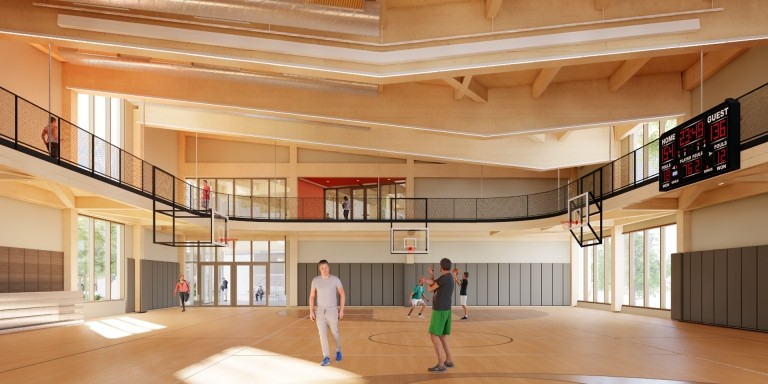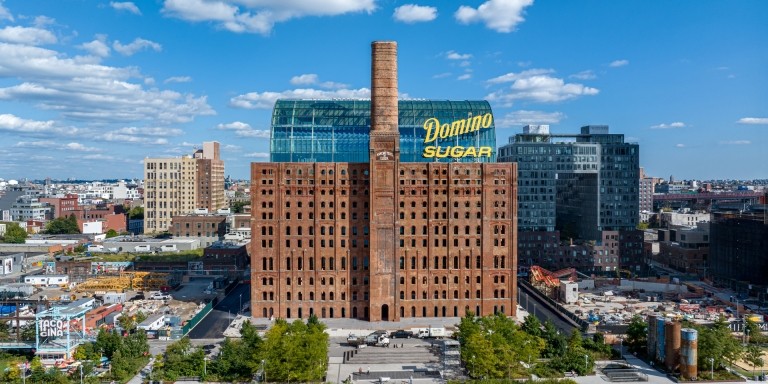NYSDOT’s First Design-Build Project in Western New York Complete and Open to Traffic

The first-ever design-build project undertaken by the New York State Department of Transportation (NYSDOT) in Western New York has been completed on schedule and on budget. The Kendrick Road Bridge over I-390 Design-Build project opened to traffic in September 2014. Led by the construction/design duo of Crane-Hogan Structural Systems, Inc. (Crane-Hogan) and T.Y. Lin International (TYLI), both of Rochester, the project significantly improves access to the University of Rochester/UR Medical Center, Rochester’s largest employer, and the surrounding area.
The high-profile project began in 2012 and focused on the widening, repair, and rehabilitation of the Kendrick Road Bridge over I-390 and the Erie Canal and the construction of a new access ramp to northbound I-390 from the Kendrick Road Bridge. The existing bridge was a two-span continuous structure of 406 feet with five steel plate girders and a composite concrete deck. The structure was widened from 46 feet to 72 feet to accommodate a new turning lane in each direction onto the new entrance ramp. The new ramp runs parallel between the Erie Canal and I-390 and is approximately 370 feet and carries a single lane of traffic. The modifications to this stretch of roadway translate into improved safety and reduced traffic congestion while providing motorists with direct access from Kendrick Road to I-390 NB. This change, along with others in a series of improvements to the area, will play a key role in the economic development of the area and the University’s expansion plans.
As the principal designer, TYLI brought innovation to the project by modifying the ramp ridge spans that were included in the concept plans to decrease the tie-in span length. This approach reduced the load on the widened bridge tie-in girder, reduced stress and strain on the entire tie-in connection and outer span system, and allowed for shorter and lighter tie-in steel members which accelerated and simplified one of the more complex portions of the ramp and bridge construction.
For its part on the project, Crane-Hogan worked diligently to maintain the schedule and provide the best product possible. The pier footers for the new access ramp to I-390 were originally intended to be below the canal water elevation. Crane-Hogan proposed to lengthen the piles and raise the footer elevations so that the bottoms were above the water level. With the design-build process, review of this design change was obtained within only a few days, and it allowed the schedule to be maintained. Crane-Hogan advocated a Class DP Concrete Bridge Deck Overlay in lieu of Microsilica Concrete Bridge Deck Overlay despite the DP option having a longer curing duration. The Regional NYSDOT Materials group concurred with Crane-Hogan that the DP alternative would produce a better long-term product. By rephasing and closing the bridge during deck pours and overlay cure periods, Crane-Hogan was able to shorten the duration of traffic restrictions on Kendrick Road. Throughout the project, Crane-Hogan was steadfastly committed to the originally specified completion date and installed structural steel during the winter months at its own expense to maintain the initial schedule.
NYSDOT Region 4 Regional Director Kevin Bush had high praise for the design-build team, “This project was a very successful inaugural design-build project for our region. The Crane-Hogan/TYLI team worked well together and I am very happy with the results.”
Hunt Engineers, Architects & Land Surveyors served as the Independent Construction Inspection firm, Atlantic Testing Laboratories completed testing services; and ROC Geotechnical Consulting Engineers provided geotechnical engineering.
Related News
-
Mar 26, 2024
Buildings Sector, Winter 2023-24: Openings, Awards, and On the Boards
AwardsProject NewsProject CompletionsProject Milestones -
Jan 17, 2024
Buildings Sector, Fall 2023: Openings, Awards, and On the Boards
AwardsProject NewsProject CompletionsProject Milestones -
Nov 9, 2023
Waukesha’s Great Water Alliance Program Solves Public Health Crisis
Project Completions


